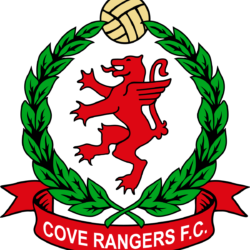In the world of football, few clubs have the rich history, passionate fanbase, and cultural significance of Operario Ferroviario FC. This team, hailing from Brazil, embodies the spirit of perseverance, community, and footballing excellence. Whether you are a new supporter, a seasoned football enthusiast, or simply exploring international clubs, this comprehensive guide aims to illuminate everything about Operario Ferroviario FC — from its origins and history to its current squad and future prospects. Join us as we delve into the vibrant world of this storied football club and explore why Operario Ferroviario FC remains a symbol of football passion.
The Origins and Early History of Operario Ferroviario FC
Every great football club has a story rooted in community, industry, and identity. Operario Ferroviario FC’s foundation is no exception; it reflects the socio-economic landscape of its hometown and the passion of its supporters. Understanding how this club started provides valuable insights into its culture, tradition, and enduring spirit 33win.
The Founding of Operario Ferroviario FC and Its Cultural Roots
Operario Ferroviario FC was established in the early 1940s in the city of Ponta Grossa, in the southern Brazilian state of Paraná. The club’s roots are intertwined with the railway industry, which was pivotal to Ponta Grossa’s development as a transport hub. The name “Ferroviario” refers to the railway workers, emphasizing the club’s connection to the local working class and industrial sector.
In its nascent stages, Operario Ferroviario FC was formed as a community team meant to represent railway employees and their families. It quickly grew in stature, becoming a symbol of pride for the working-class community. The club’s early color schemes, emblem, and chants reflected industrial themes and the collective resilience of the railway workers, creating a unique identity distinct from other clubs in Brazil.
The Evolution of the Club in the Mid-20th Century
In the decades immediately following its inception, Operario Ferroviario FC played predominantly in local and regional tournaments. Despite limited resources, the team was known for its gritty style of play and passionate fan engagement. It fostered local rivalries with nearby clubs such as Esporte Clube Pelotas and others in the Paraná state league.
The 1960s and 1970s marked a period of stabilization and growth for the club. Infrastructure improvements, such as the refurbishment of the local stadium, and youth development programs contributed to the club’s rising profile. This era witnessed the emergence of key players who would go on to become local legends, further cementing Operario Ferroviario’s standing within the community.
Key Moments and Achievements in Early Years
The club’s early milestone came in the late 20th century when it qualified for the Campeonato Paranaense, the state league of Paraná, for the first time. Although they did not secure major titles during this period, their participation represented a significant achievement for a club rooted in industrial labor.
Another key moment was the promotion to higher divisions in the Brazilian football league system during the 1980s. This ascendancy increased the club’s visibility nationally and drew larger crowds to the stadium. It also attracted talented players from across the region, eager to showcase their skills on bigger stages.
Throughout these formative years, Operario Ferroviario FC demonstrated resilience, community loyalty, and a deep-seated identity that continues to influence the club today.





